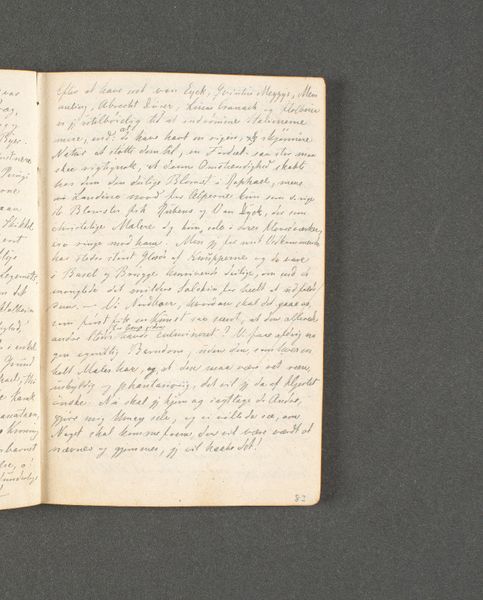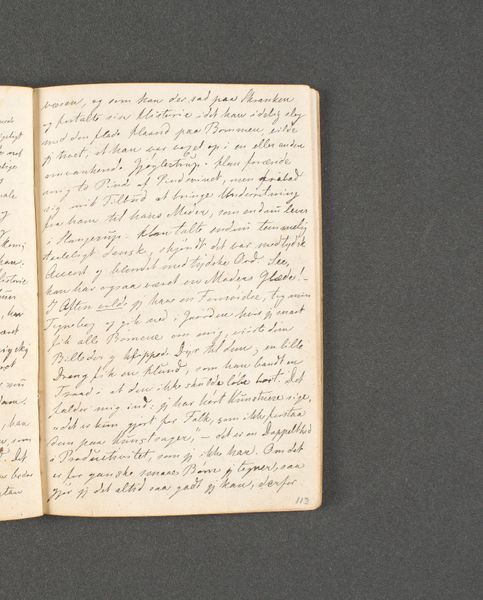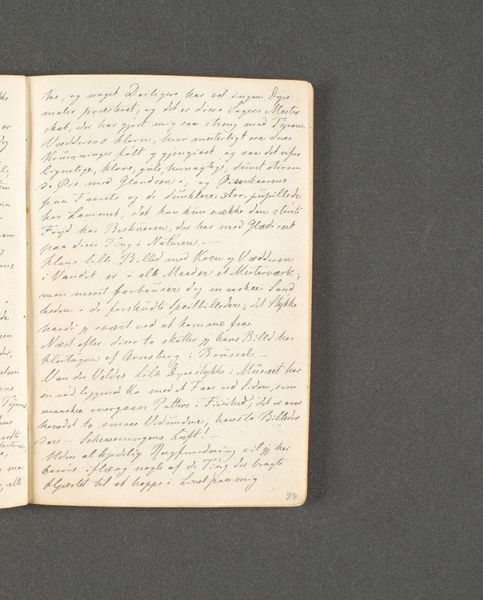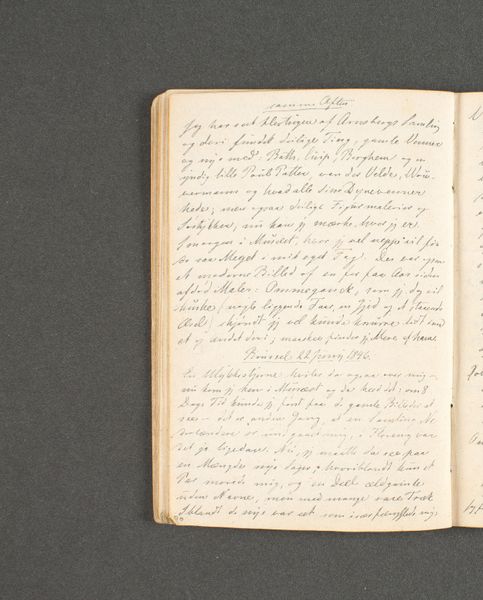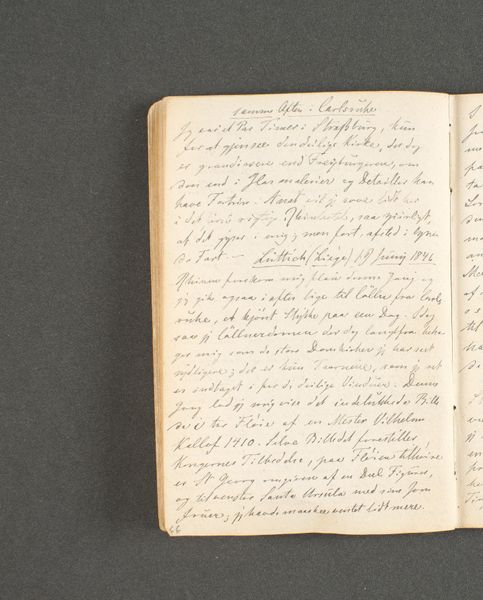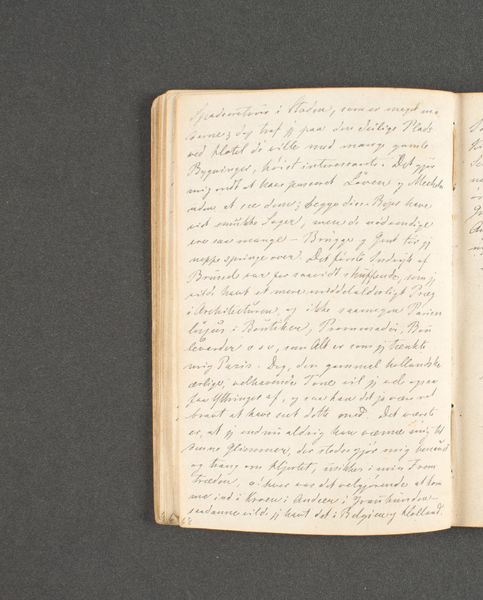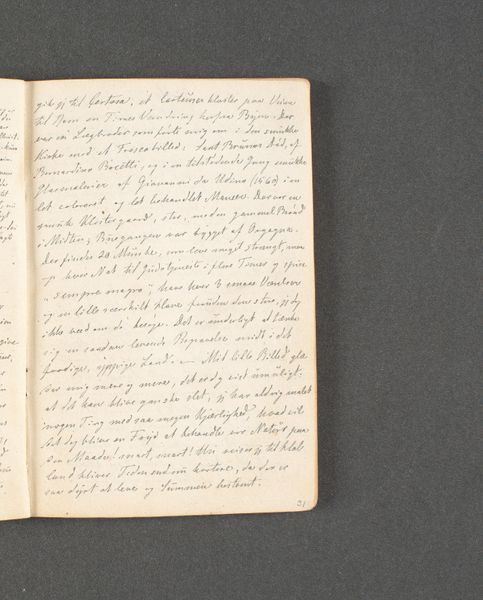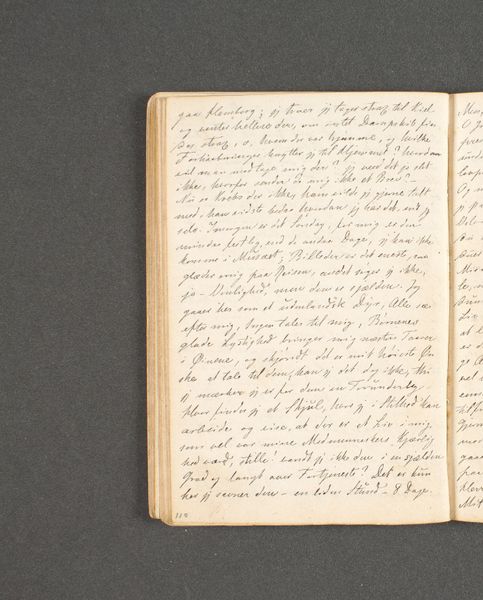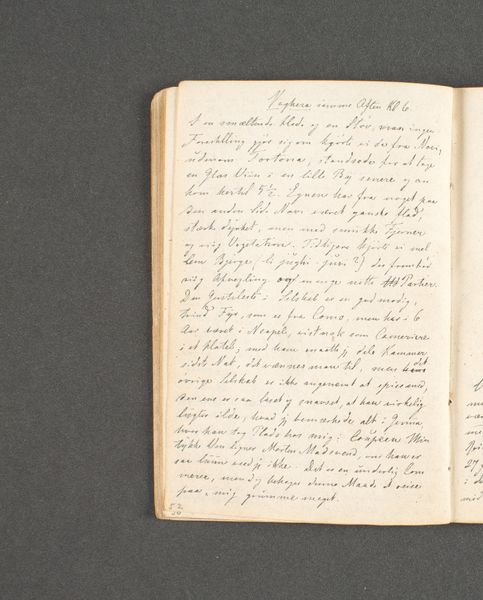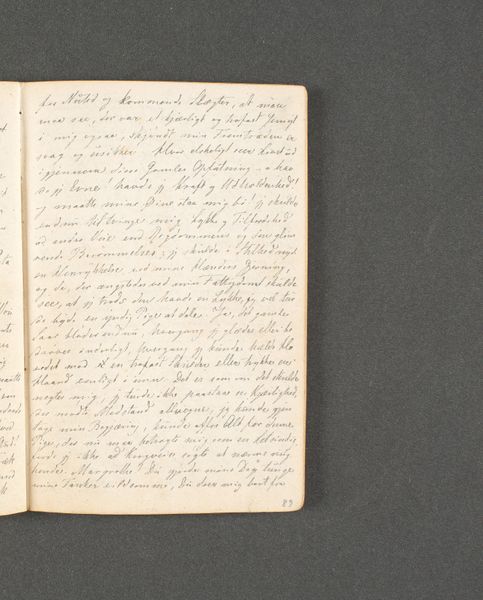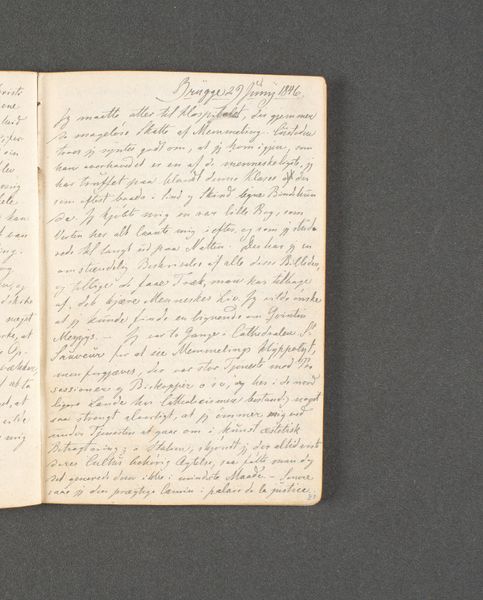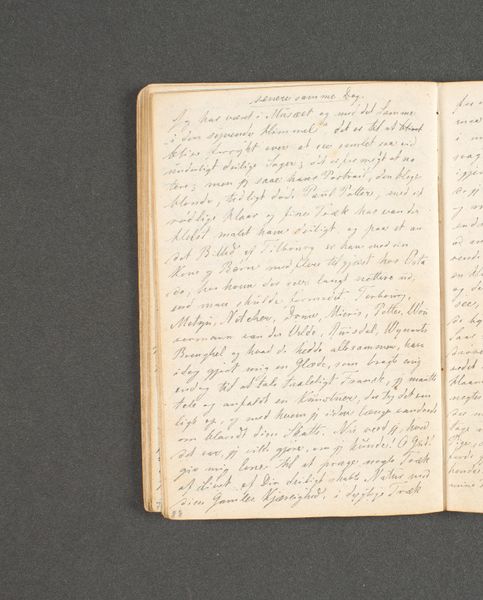
drawing, paper, pencil
#
drawing
#
narrative-art
#
landscape
#
paper
#
romanticism
#
pencil
#
miniature
Dimensions: 131 mm (height) x 89 mm (width) (bladmaal)
Curator: Here we have a page from Johan Thomas Lundbye's travel journal, dating back to 1846. It's titled "Rejsedagbog. Firenze" which translates to "Travel Journal. Florence." Editor: It's incredibly intimate; like we are peering directly into Lundbye's personal thoughts and experiences through his private writing. I see a very delicate script filling the pages of this notebook; almost like whispers across time. Curator: Exactly! Lundbye used pencil on paper for this piece. It’s more than just observation. He created this work during a period of intense artistic exploration while in Florence. You see the Romantic landscape tradition mixed with the narrative impulse to document travel. Editor: So it's a merging of the inner world of emotion, his emotional reaction to being in Florence with objective representation. Was he simply a tourist, or was he intentionally engaging with questions around colonialism, looking at how landscapes can be passively or aggressively consumed? Curator: It is hard to answer whether this miniature intends to actively address these kinds of complicated socio-political tensions. It gives us something undeniably sincere: we find someone wrestling with visual transcription and how to translate immediate experience into a permanent record. Editor: Yet, even that intention speaks to power dynamics; the power to record, the power to translate. This brings to my mind the history of travel journals and how often they were deployed in the service of imperial narratives. Curator: While I think it’s valuable to consider travel journals in this light, here, looking at Lundbye grappling with these forms, what touches me most is how individual his artistic investigation feels. How deeply the experience impacted his vision, his need to record. Editor: It does bring a sense of immediacy; seeing the artist digest his experiences in real time is strangely compelling, despite the complicated context we brought into the discussion. Curator: It offers a very tender look into an artist's evolving perspective. Editor: I appreciate how this work is in dialogue with both historical movements and contemporary discourse. It’s an invitation to ask crucial questions, without easy answers.
Comments
No comments
Be the first to comment and join the conversation on the ultimate creative platform.
